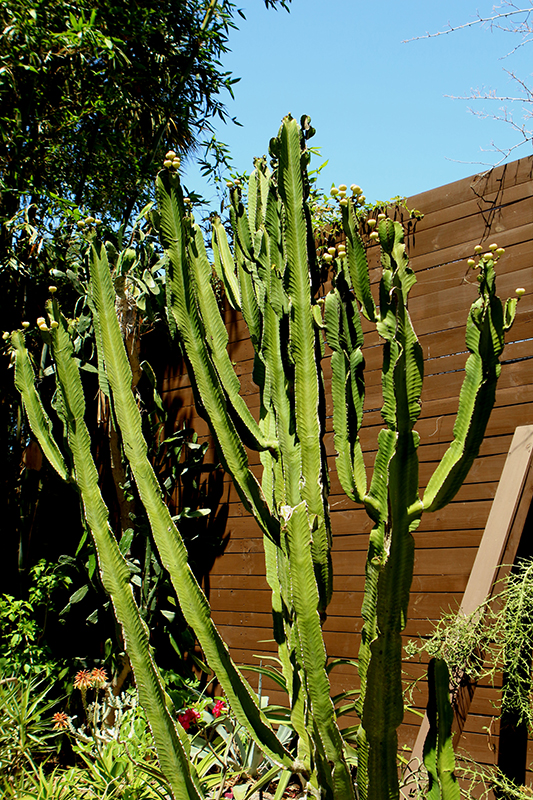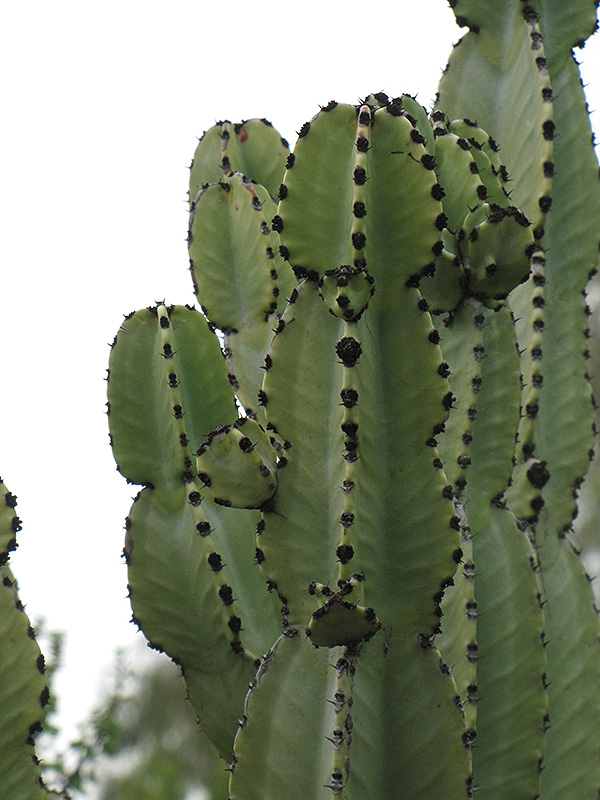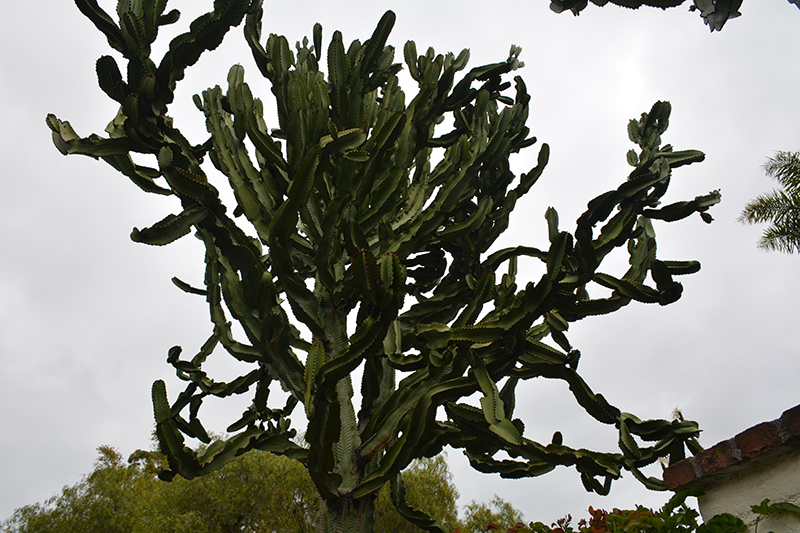Plant Finder
Height: 40 feet
Spread: 20 feet
Sunlight:
![]()
![]()
Hardiness Zone: 9a
Other Names: Naboom
Description:
A bold landscape accent plant; narrow green foliage atop cactus-like branches that store moisture; bright yellow flowers followed by dark red-purple fruits; adds a truly exotic dimension to the garden; all parts of plant are highly poisonous
Ornamental Features
Candelabra Tree features showy clusters of yellow flowers at the ends of the branches from late winter to mid spring. It has attractive green evergreen foliage. The succulent narrow leaves are highly ornamental and remain green throughout the winter. It features abundant showy dark red capsules in early summer.
Landscape Attributes
Candelabra Tree is an open multi-stemmed evergreen plant with an upright spreading habit of growth. Its relatively coarse texture can be used to stand it apart from other landscape plants with finer foliage.
This is a relatively low maintenance plant, and should not require much pruning, except when necessary, such as to remove dieback. Deer don't particularly care for this plant and will usually leave it alone in favor of tastier treats. Gardeners should be aware of the following characteristic(s) that may warrant special consideration;
- Spiny
Candelabra Tree is recommended for the following landscape applications;
- Accent
- Mass Planting
Planting & Growing
Candelabra Tree will grow to be about 40 feet tall at maturity, with a spread of 20 feet. It has a low canopy with a typical clearance of 3 feet from the ground, and should not be planted underneath power lines. It grows at a fast rate, and under ideal conditions can be expected to live for 60 years or more.
This plant does best in full sun to partial shade. It prefers dry to average moisture levels with very well-drained soil, and will often die in standing water. It is considered to be drought-tolerant, and thus makes an ideal choice for xeriscaping or the moisture-conserving landscape. It is not particular as to soil pH, but grows best in sandy soils. It is highly tolerant of urban pollution and will even thrive in inner city environments. This species is not originally from North America, and parts of it are known to be toxic to humans and animals, so care should be exercised in planting it around children and pets.






